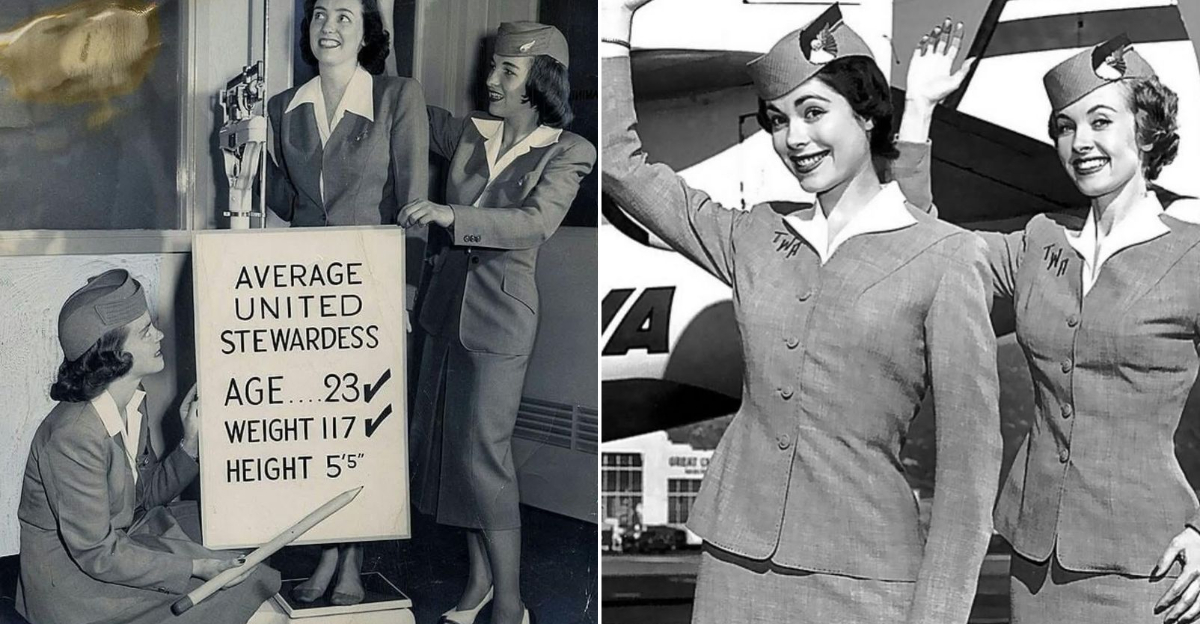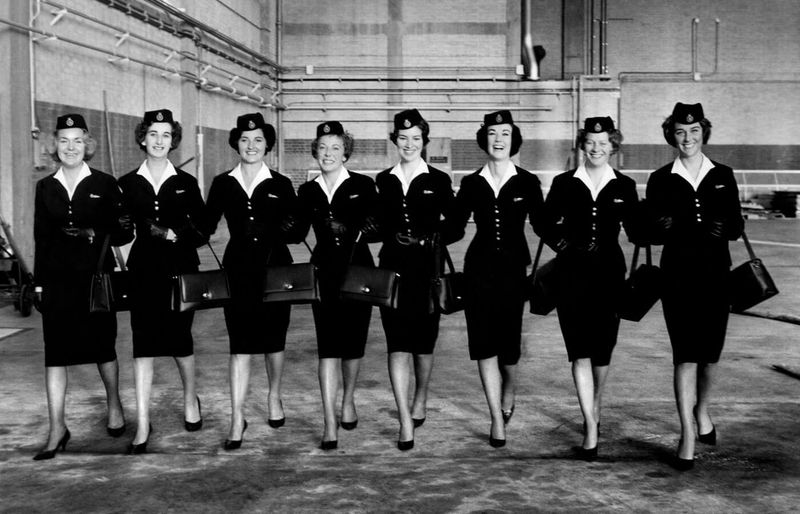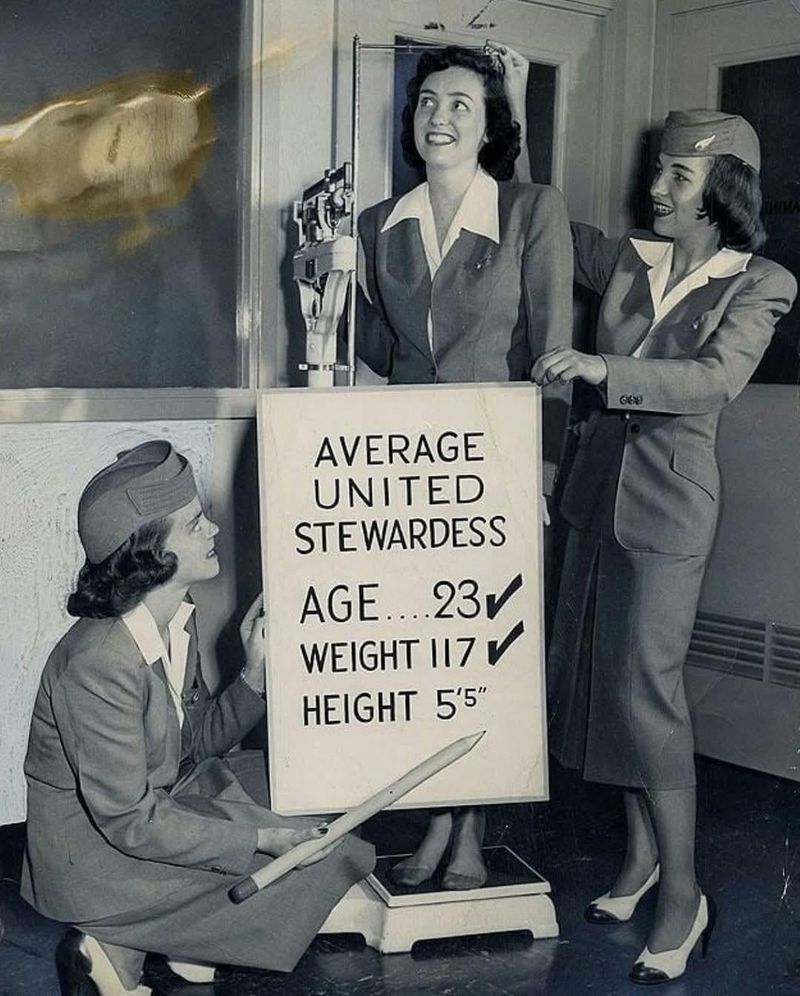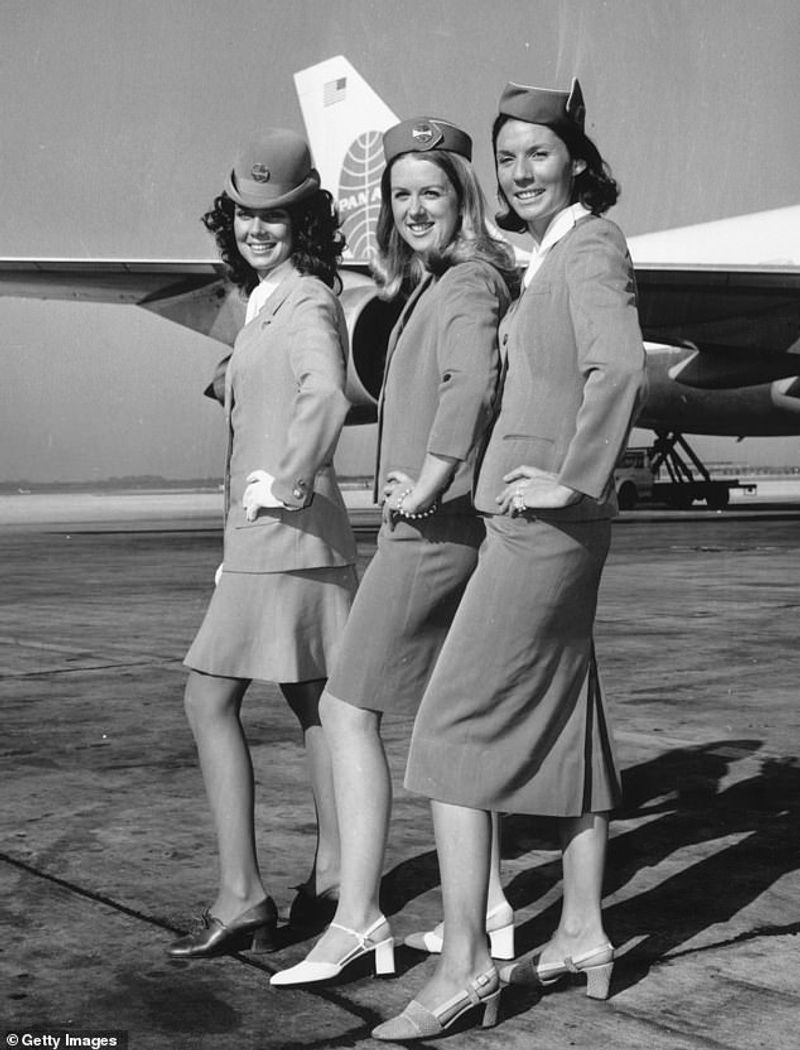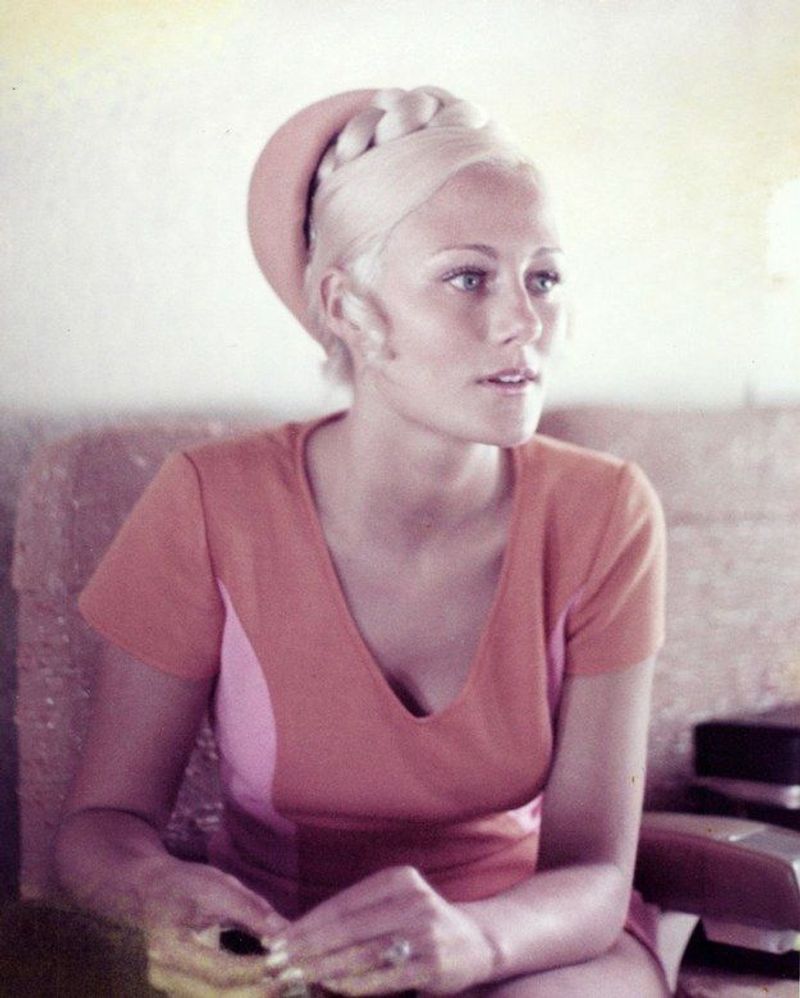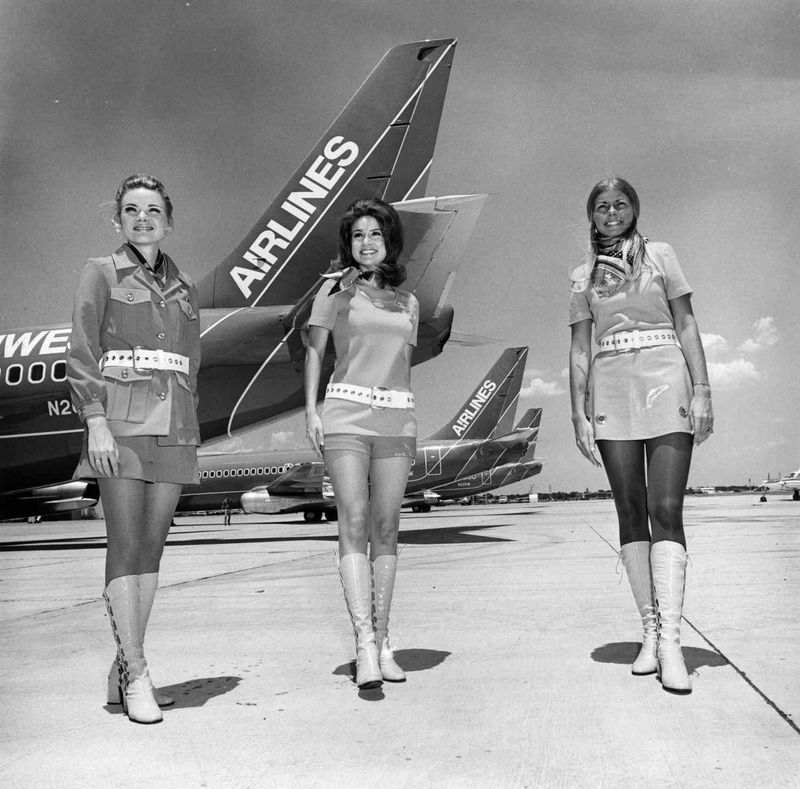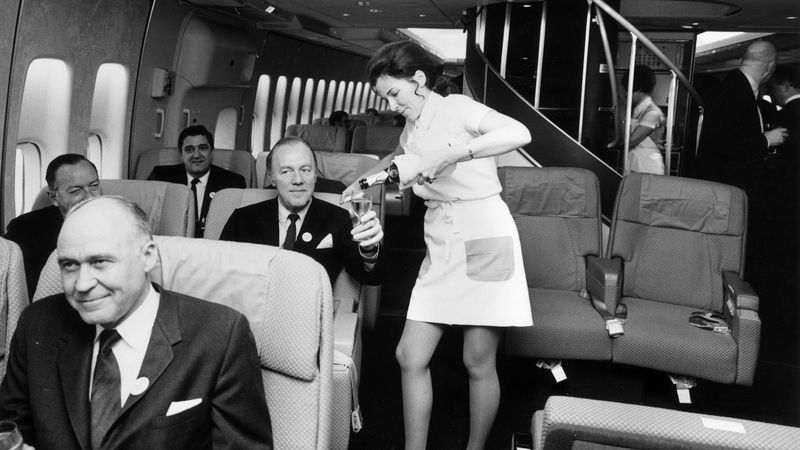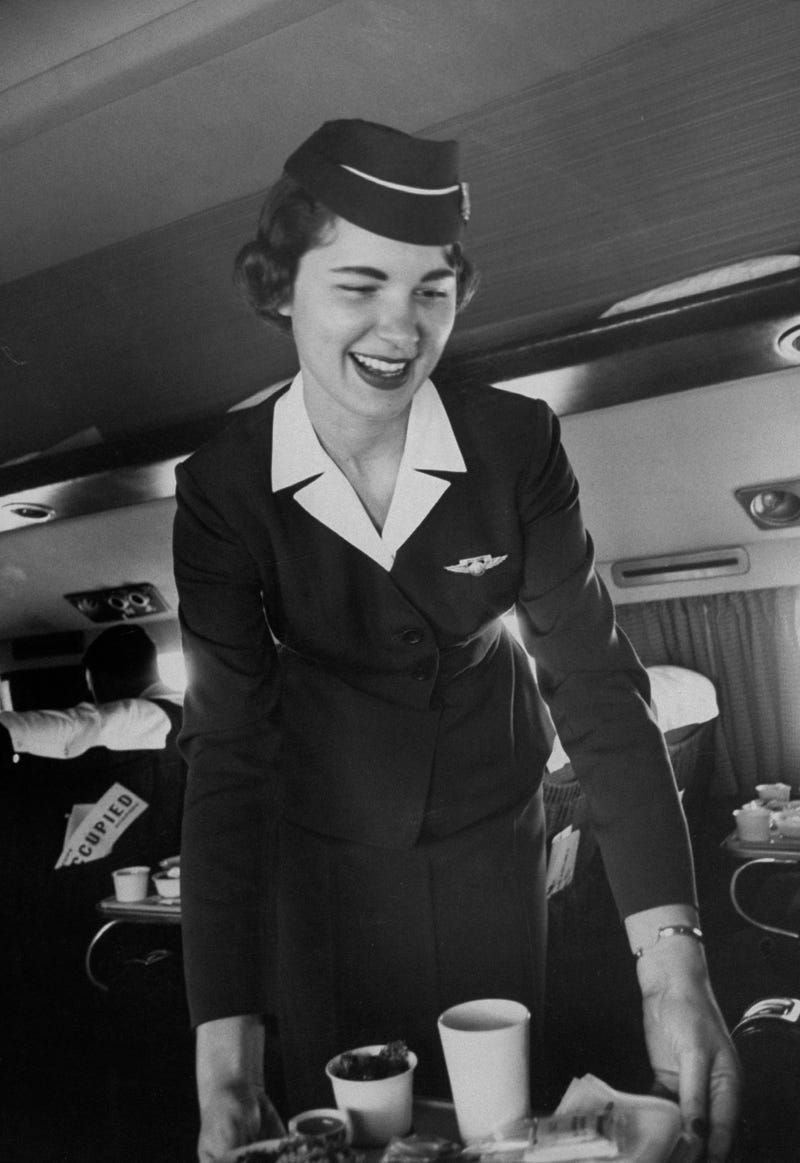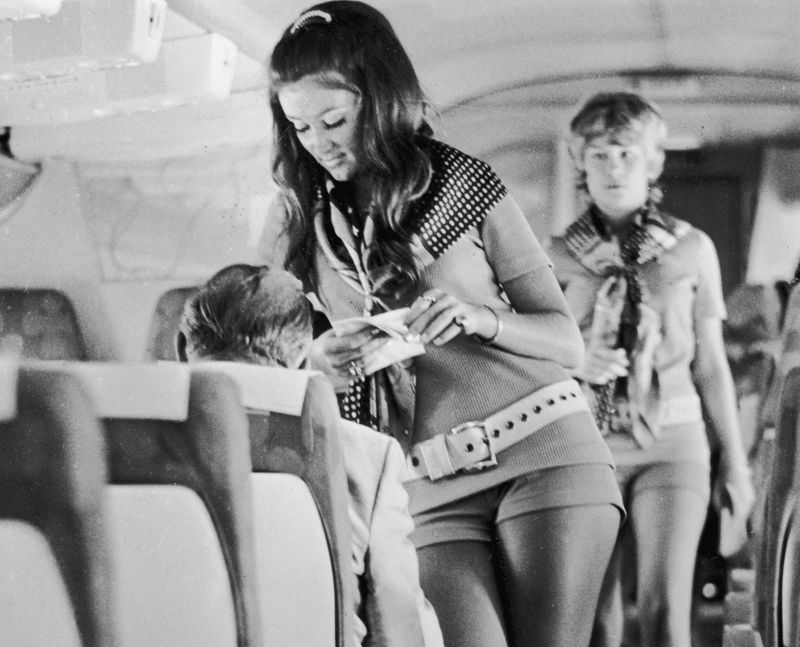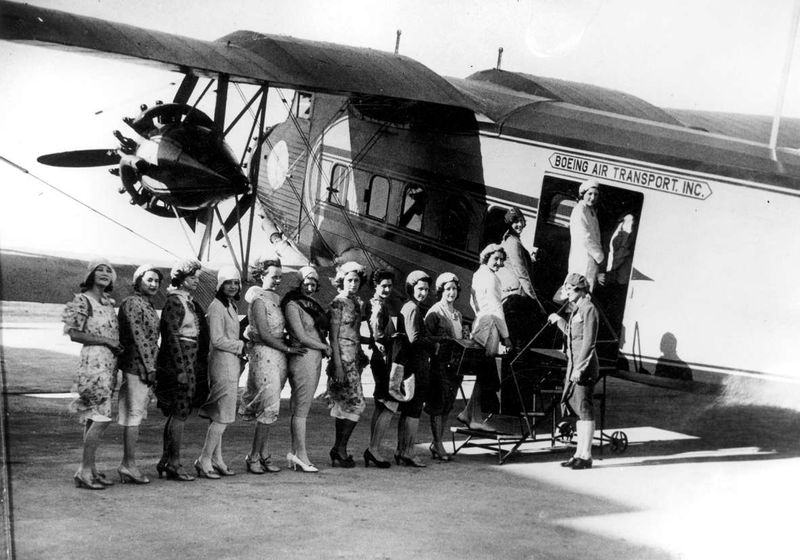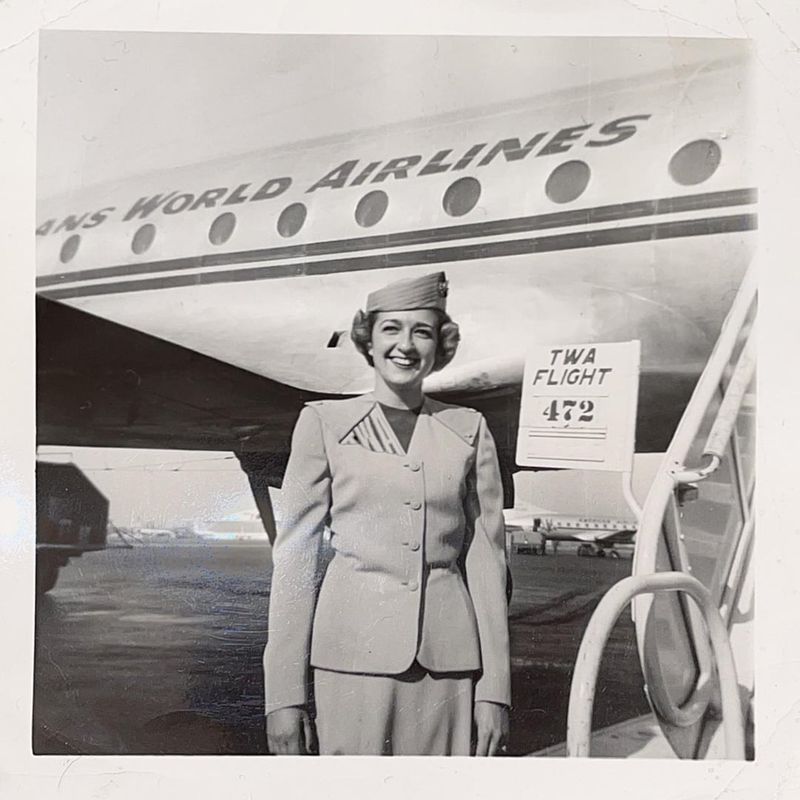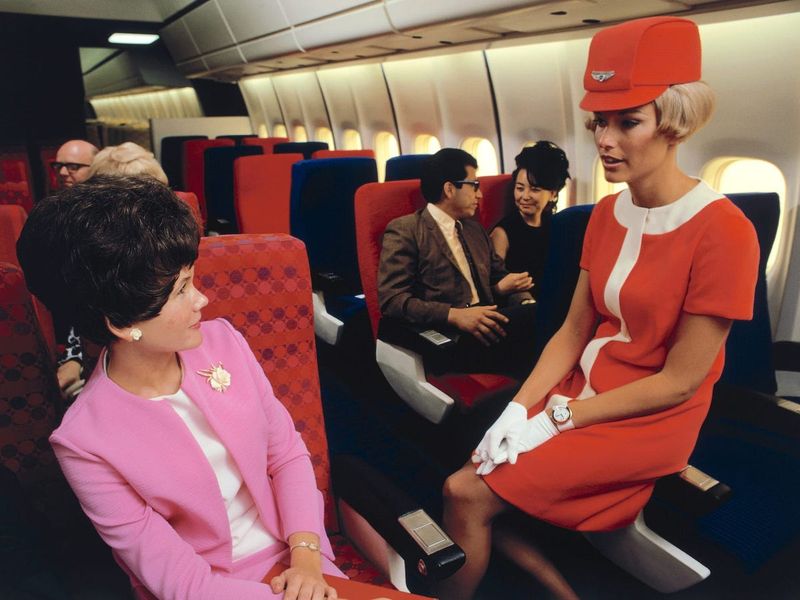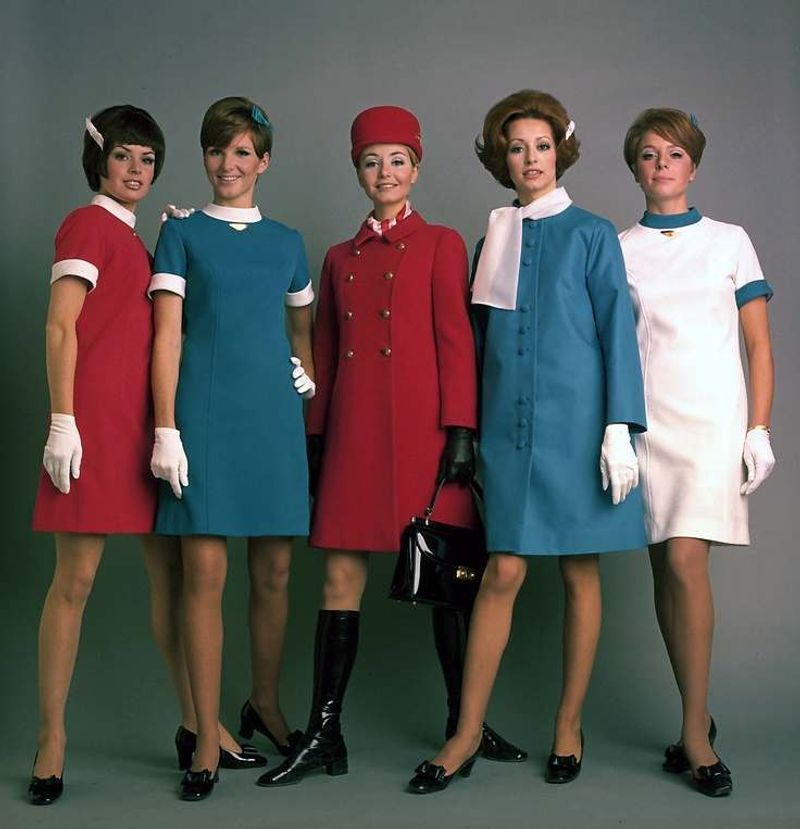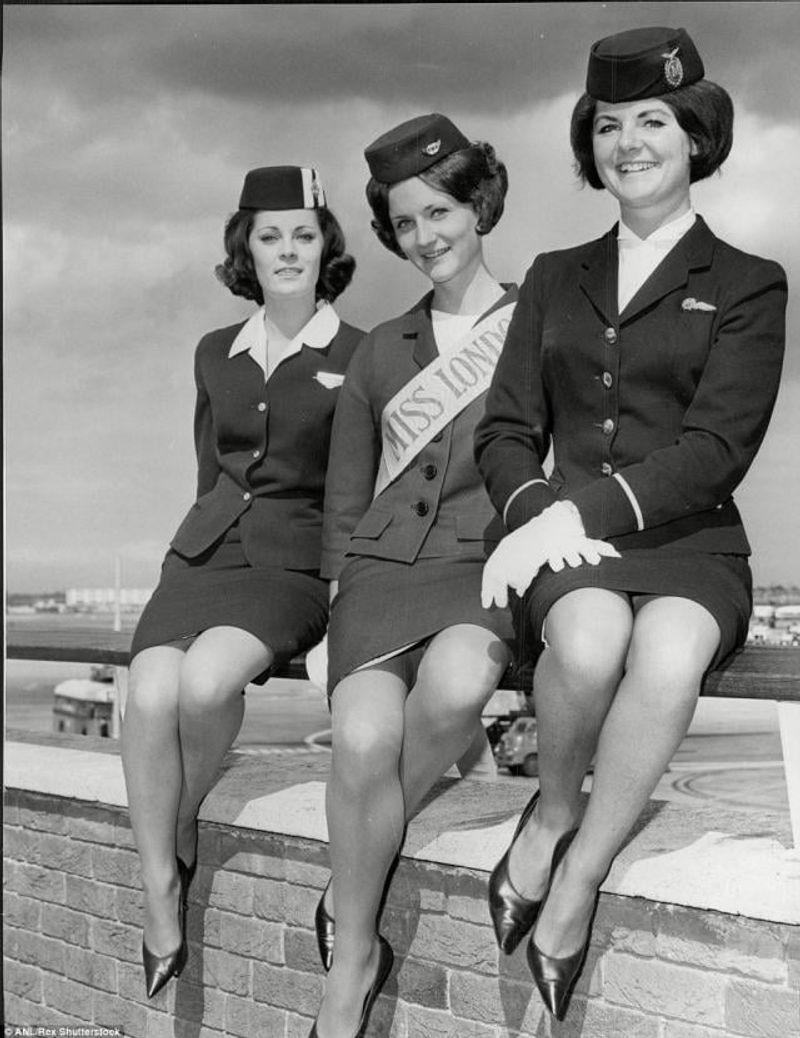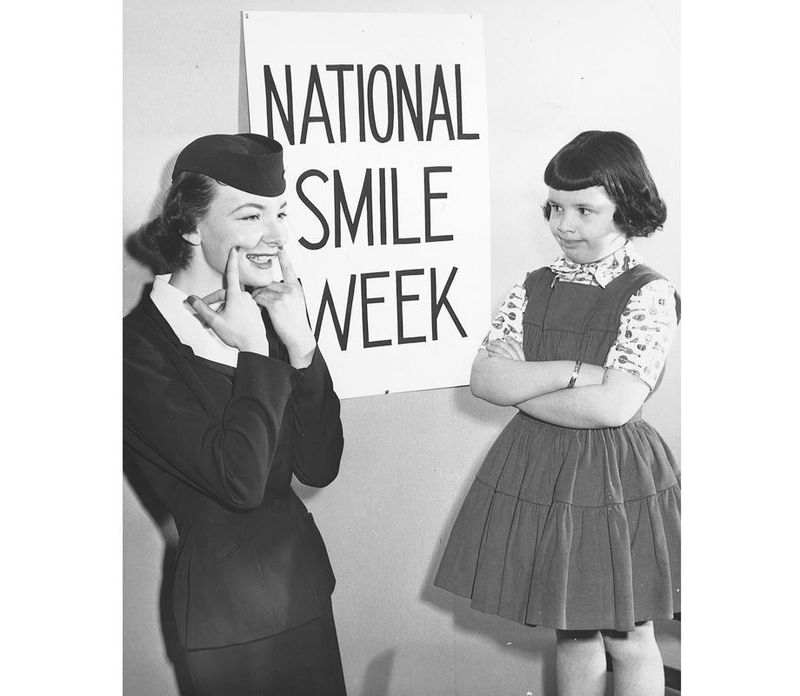Explore the incredible and sometimes shocking expectations placed on stewardesses during the 1950s and ’60s. This era, known for its glamorous portrayal of air travel, often hid a complex web of strict and often outrageous job requirements.
From maintaining specific beauty standards to adhering to rigid weight limits, stewardesses were held to a unique set of rules that defined their careers and personal lives.
These 15 items highlight the extraordinary demands flight attendants faced during this iconic period in aviation history, revealing a world far removed from today’s standards.
1. Age Limits
Age restrictions were a significant challenge for stewardesses in the ’50s and ’60s. Many airlines imposed age limits, often around 32, considering women too old to fly beyond this age. The restrictions reflected cultural stereotypes valuing youth and beauty over experience.
As stewardesses aged, they faced the pressure of an impending career change, often with limited options outside aviation. The age limit policy highlighted the era’s emphasis on appearance and the transient nature of the stewardess role, impacting career longevity and personal development.
2. Strict Weight Limits
In the 1950s and ’60s, stewardesses faced stringent weight requirements. Regular weigh-ins ensured they remained within the narrow limits set by airlines. Those who exceeded the limits could face harsh penalties, including being grounded or even terminated.
This policy was part of the broader emphasis on appearance, reflecting societal expectations of women at the time. Airlines believed that a stewardess’s physical appearance was as crucial as her skills in providing excellent service. The pressure to maintain an ideal weight added stress to an already demanding job.
3. Mandatory Single Status
Stewardesses in this era were required to remain unmarried. Marriage often resulted in immediate job termination. This policy reflected the view that a stewardess’s role was temporary and secondary to her future duties as a wife. Airlines marketed stewardesses as symbols of glamour and independence, ideals believed to appeal more to unmarried women. The requirement added personal strain, forcing many women to choose between their careers and personal relationships. It symbolized the societal norms of the time, where single women were seen as more dedicated employees.
4. Beauty Standards Contracts
Stewardesses were contractually obligated to maintain specific beauty standards. Airlines dictated hair, makeup, and uniform details, expecting compliance at all times. The focus on appearance extended beyond work hours, influencing personal lives.
Beauty was considered part of the job, enhancing the airline’s image. Stewardesses trained to meet these standards faced constant scrutiny, with regular inspections ensuring adherence. This emphasis on aesthetics underscored the era’s view of stewardesses as part of the airline’s branding, prioritizing appearance over other professional attributes.
5. Perfect Makeup—Always
Wearing makeup was an unyielding requirement for stewardesses. Even on long-haul flights, maintaining a flawless appearance was mandatory. Airlines believed that makeup contributed to a polished, professional image, aligning with the glamorous portrayal of air travel. This expectation demanded constant vigilance, requiring stewardesses to be prepared with cosmetics at all times. The pressure to look impeccable, combined with the job’s physical demands, added another layer of complexity to their roles. Makeup became not just a personal choice but a professional obligation.
6. High Heels Required
Stewardesses were required to wear high heels when boarding and deplaning. This rule prioritized appearance over comfort and safety. High heels were seen as part of the polished image airlines wanted to project, despite the practical challenges.
Long hours standing or walking in heels could lead to discomfort and even injury. The emphasis on wearing heels highlighted the importance placed on appearance, often at the expense of practicality. Stewardesses had to balance elegance and professionalism with the physical realities of their demanding roles.
7. No Glasses Allowed
Many airlines prohibited stewardesses from wearing glasses, viewing them as unattractive. This rule ignored individual needs and prioritized aesthetics over functionality. For those who needed glasses to see clearly, this posed a significant challenge, affecting their ability to perform tasks safely.
The no-glasses policy was part of a broader emphasis on maintaining a specific image, often disregarding personal comfort. This requirement underscored the era’s focus on visual appeal, sometimes compromising practicality and safety for the sake of an idealized appearance.
8. Wardrobe Inspections
Regular wardrobe inspections were a fixture of a stewardess’s life. Uniforms, hairstyles, nails, and shoes were scrutinized to ensure they met the airline’s standards. Compliance was non-negotiable, with penalties for any deviations. These inspections reinforced the importance of appearance in the stewardess role, reflecting the era’s broader cultural norms. They contributed to a stressful environment, where minor infractions could have significant consequences. The focus on uniformity and aesthetics sometimes overshadowed other skills and qualities stewardesses brought to their roles.
9. No Pregnancy Allowed
Pregnancy led to automatic resignation for stewardesses. Airlines enforced this policy strictly, reflecting the era’s views on women’s roles. A pregnant stewardess faced an abrupt end to her career, with no room for negotiation.
The no-pregnancy rule highlighted the temporary nature of the job, mirroring societal expectations of women as primarily homemakers. This requirement forced many to choose between their family aspirations and professional ambitions, often with little support or understanding. It underscored the challenges women faced in balancing career and personal life.
10. “Charm School” Training
Airlines sent stewardesses to “charm school,” where they learned etiquette, poise, and social graces. This training aimed to enhance their interactions with passengers, promoting a refined image. Lessons included graceful walking, smiling, and even pouring coffee correctly. Charm school reinforced the idea that a stewardess’s role extended beyond safety and service, encompassing personal presentation and demeanor. The training reflected broader social values, emphasizing the importance of appearance and manners. For many, these lessons became an integral part of their professional identity.
11. No Speaking to Pilots Off-Duty
Fraternizing with pilots off-duty was frowned upon, often leading to disciplinary action. Airlines discouraged these interactions to maintain professionalism and prevent gossip. This rule limited personal freedom, creating barriers between crew members. It reflected a desire to control the stewardess’s image and behavior, even outside work.
The policy underscored a broader culture of surveillance and restriction, where personal and professional boundaries were tightly regulated. Despite the challenges, many stewardesses navigated these restrictions with resilience and creativity.
12. Personal Lives Were Monitored
Airline supervisors often kept tabs on stewardesses’ personal lives, monitoring their behavior and reputations. This surveillance extended beyond work, affecting social interactions and lifestyle choices. The monitoring reflected a broader societal tendency to control women’s roles and conduct. Stewardesses faced the constant pressure of living up to the airline’s image, with little privacy or autonomy. The practice highlighted the demanding nature of the job, where personal freedom was often sacrificed for professional expectations. It left many feeling constrained, yet determined to succeed.
13. Must Stay Thin
Maintaining a thin physique was critical for stewardesses. Some airlines even provided girdles to ensure adherence to weight standards. Regular “weigh-ins” were part of the job, adding pressure to an already demanding role.
This focus on thinness was representative of broader societal beauty ideals, where a stewardess’s appearance was closely linked to her professional success. The emphasis on weight management underscored the era’s narrow definitions of beauty, often overshadowing other aspects of a stewardess’s skills and contributions.
14. No Smoking, Drinking, or Chewing Gum in Uniform (Ever)
Even off-duty, stewardesses were forbidden from smoking, drinking, or chewing gum while in uniform. This rule upheld the image of refinement and professionalism airlines wanted to convey. Stewardesses had to maintain decorum at all times, reinforcing the idea that their role was not just a job but a lifestyle.
The restriction on personal behavior highlighted the era’s emphasis on appearance and conduct, both in and out of the workplace. It added another layer of complexity to their lives, requiring constant vigilance and self-control.
15. Smile Through Everything
Stewardesses were expected to smile through all situations, regardless of passenger behavior or flight conditions. This unyielding requirement added emotional labor to their roles, as they navigated challenging interactions with grace.
The expectation to maintain a cheerful demeanor emphasized the importance of customer service and airline image. Smiling through adversity became a hallmark of the stewardess profession, showcasing their resilience and dedication. This requirement, though demanding, also highlighted the vital role stewardesses played in creating a pleasant and welcoming atmosphere for travelers.
